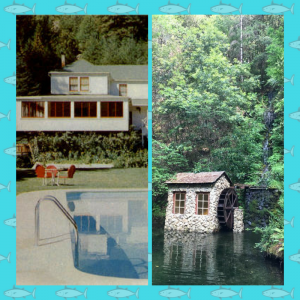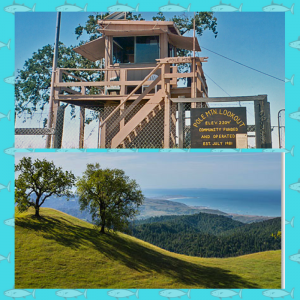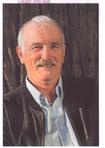John Michael McCarty's Blog, page 6
September 13, 2018
Cazadero – Part 1
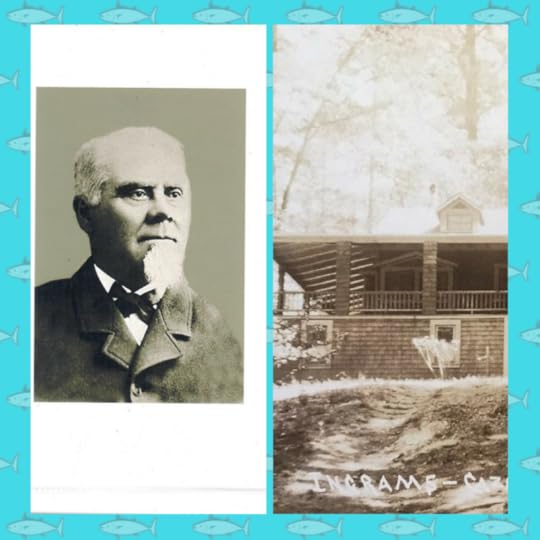
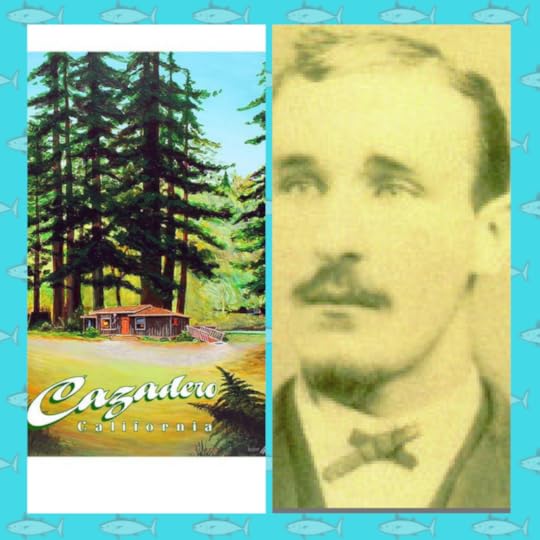
Silas Ingram (upper left photo) and his wife joined a wagon train bound for California in 1840. While crossing the plains, they were attacked by a warrior party of the Ute tribe. The Ingrams walked over 100 miles to Salt Lake City where they caught transportation to San Francisco. Soon thereafter, the family bought property in the hills north of the Russian River and built a hunting lodge (upper left photo) and a sawmill. Today, that property is known as Lions Head Ranch.
In 1869 Silas became the first post master of the nearby town, which was named Ingrams in honor of the family. However, the mail was often not delivered on time or delivered at all. That was because it was pilfered on a regular basis. In an awkward twist of history, the culprit turned out to be Silas’s own son, Charles, who later confessed to the crime and served eighteen months in jail. Silas Ingram died on June 8, 1900 and is buried at the Redwood Cemetery in Guerneville.
In 2007 the entire town of Cazadero was for sale on the cheap. A similar occurrence happened in 1888. Despite being the rainiest place in the state (85 inches/year), the area has always had a certain appeal. This was true when George Simpson Montgomery (upper right photo) purchased Ingrams and changed its name to Cazadero, which is Spanish for “The Hunting Place”.
At the time George was living at the Palace Hotel in San Francisco and holding membership in the exclusive Bohemian Club. Probably due to peer pressure, he soon developed into a two-fisted drinker with a reputation for visiting the brothels of the City. His wife ventured in the opposite direction, establishing a ministry. Her book, Prayer of Faith, was translated into eight languages and sold over four hundred thousand copies. A few years later her husband saw the evils of his ways and converted to Christianity.
At the insistence of his wife, George attempted to convince the local ruffians of Cazadero to go dry. If one did not obey the new regulations, Montgomery blocked the person’s business activities with heavy tax penalties. I ask you, what kind of decent, civilized municipality would turn its back on a little fun? After all, the bible says that God works harder for sinners, right?
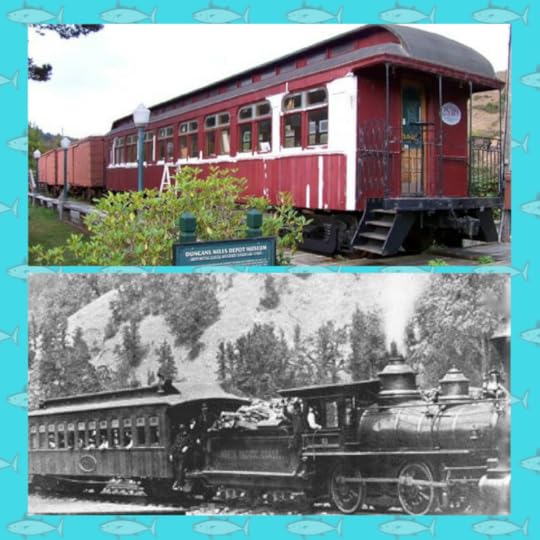
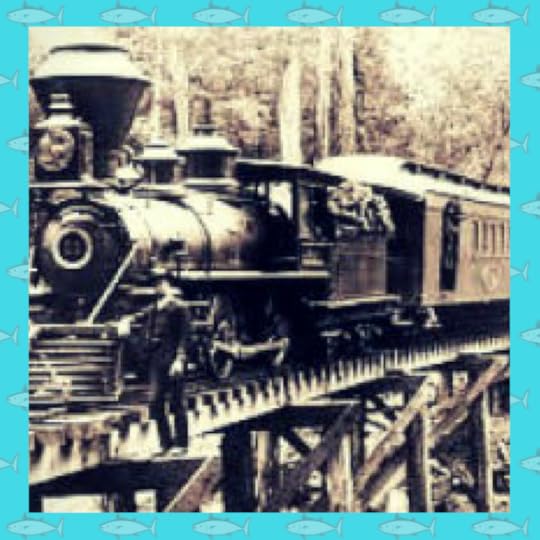
The North Pacific Coast R.R. (upper left photos) ran from Sausalito to Cazadero via west Marin. Between Freestone and Occidental the train crossed the monstrous Browns Canyon Trestle, which at the time was the largest man-made structure west of the Mississippi.
The broad gauge and narrow gauge met in Monte Rio before running down present-day Moscow Road and crossing the Russian River at Duncans Mills, continuing to Cazadero, etc. The local lumber industry helped rebuild San Francisco and Santa Rosa after the 1906 earthquake. It is also said that redwood pilings from the mills were used as foundations for the Bay Bridge.
Mishaps along the line were plentiful. George Montgomery’s insistence that the town go dry might have initiated a protest in 1894 when Engine No. 9 was hijacked by its crew and others in Duncans Mills with the intent of a party-run to Cazadero. The train never reached its destination, plunging into Austin Creek while attempting to cross the trestle at Elim Grove (upper right photo) .
Ten days later a local Native American shaman joined the search for missing persons. He affixed a candle to a board and sent it on its way downstream. In an eddy of tangled brush, the remains of seven men were discovered. Booze and religion have never been good bed partners.
On September 17, 1923, a moonshine still blew up, igniting a blaze that roared through the lumber mills from Guerneville to Jenner. With the lumber trade on the fritz, passenger service had to pick up the slack. The Northwestern Pacific Railroad offered “dollar days” on weekends with a roundtrip fare of $1.25 between the City and the River.
The Depression soon arrived with the NWP running over a million dollars in the red. The last train out of Cazadero was on July 31, 1933, followed by the Guerneville line two years later. Locals mobbed the passenger cars for the final ride and partied to the next stop. Some inebriated souls, however, lost track of time (and consciousness) to find themselves at the terminus in Sausalito. Or so the story goes.
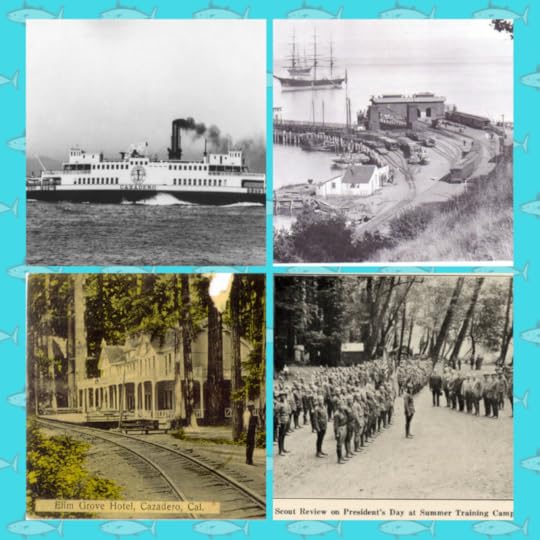
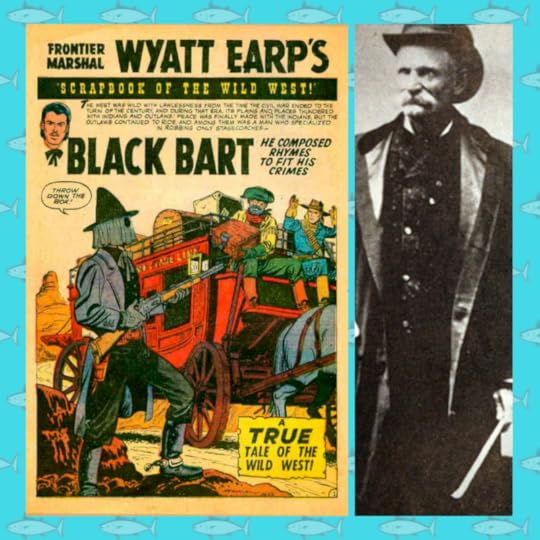
Black Bart (Charles Boles) robbed the Wells Fargo & Co. stagecoaches on twenty-nine different occasions. Two of these holdups were near the Russian River. One was just west of the town of Duncans Mills. The second was north of Jenner at Meyers Grade on August 3, 1877, where Black Bart made his demands in a civil, gentlemanly manner accompanied by a double-barreled shotgun. He tucked away the $300 in cash and tossed the following poem into the strongbox: “I’ve labored long and hard for bread / For honor and for riches / But on my corns too long you’ve tread / You fine-haired sons of bitches.”
It is said that he hid out that night at a barn (the refurbished version can be seen on present-day Hwy. 116 at Sheridan Ranch) before heading into Guerneville. At a future holdup, he left behind a handkerchief with a laundry mark, which led to his ultimate downfall. Charles Boles served over four years in San Quentin Prison before being released in 1888.
Upon his release, Black Bart was asked if he would rob stages again. He said no. The reporter continued and queried whether or not the infamous poet had any more verses up his sleeve. His response was: “Young man, didn’t you hear me say that I wasn’t going to commit any more crimes?”
SIDEBARS:
Alice Adams Dahl’s research states that Black Bart never rode a horse. He always walked.
Perri Paniagua recalls that for over sixty years her relatives had told her that the name “Elim” is “mile” spelled backward, the distance from town. Others say that George Montgomery’s wife gleaned the name from the Bible. Exodus 15:27: “And Moses came to Elim where there were twelve wells of water…” Scholars interpret Elim as being “The Place of Refreshing”.
Cheatham Jethro remembers as a local getting booted from the Boy Scout swimming hole on many occasions.

The post Cazadero – Part 1 appeared first on John McCarty.
September 9, 2018
Secret Tunnels of San Francisco
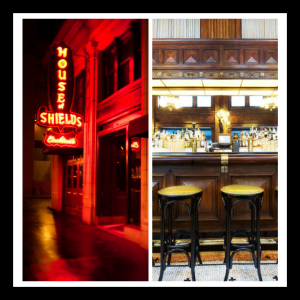 When America went dry during Prohibition, San Francisco simply went underground, digging secret tunnels. The House of Shields was established in 1908 and is presently located at 39 New Montgomery St. As you enter under an alluring neon sign right out of a Bogie movie, you saunter across a mosaic tiled floor to a grand bar. Textured panels and columns that adorn it provide a reassuring sturdiness that fits the bar’s authenticity. A thick bar rail, flat stools, paneled walls, and dark booths confirm the fact that yes, this is a real, historic tavern. To gain access to bootleg whiskey (as well as women) during Prohibition, a tunnel was built connecting the laundry room of the Palace Hotel to the above establishment, which was across the street. The House of Shields was a former gentlemen’s club where women were not allowed until 1976.
When America went dry during Prohibition, San Francisco simply went underground, digging secret tunnels. The House of Shields was established in 1908 and is presently located at 39 New Montgomery St. As you enter under an alluring neon sign right out of a Bogie movie, you saunter across a mosaic tiled floor to a grand bar. Textured panels and columns that adorn it provide a reassuring sturdiness that fits the bar’s authenticity. A thick bar rail, flat stools, paneled walls, and dark booths confirm the fact that yes, this is a real, historic tavern. To gain access to bootleg whiskey (as well as women) during Prohibition, a tunnel was built connecting the laundry room of the Palace Hotel to the above establishment, which was across the street. The House of Shields was a former gentlemen’s club where women were not allowed until 1976.
Tunnel:
Some say that the tunnel was used long after Prohibition ended to arrange trysts for the posh clientele of the Palace. Though the official story is that President Harding died on August 2, 1923 of a heart attack at the ritzy hostelry, others will whisper confidently that he passed away in the presence of a woman at the House of Shields who was not his wife. Don’t ask to see the tunnel in the basement of the saloon unless you are a VIP. But perhaps you can get “lost” on your way to the restroom. Old ghosts await. Happy adventure.
The post Secret Tunnels of San Francisco appeared first on John McCarty.
August 27, 2018
CazSonoma Inn
CazSonoma Inn was formerly known as Cazanoma Lodge. At one time it was a hunting resort and now serves as a quaint bed and breakfast. Getting there is half the adventure as you wind your way up Cazadero Highway toward the three-store town by the same name. Head up Kidd Road along a dirt path for three miles until you arrive at an English cottage with formal gardens and a lazy pool. Millpond Cottage, the inn’s main building, featured a menu specializing in beer-braised bratwurst with cabbage and roulade, all cooked by a big German chef named Oudo. This was back in the day when Randy and Gretchen Neumann (widow of John Mino) were owners and managers (1970-2000).
CazSonoma Inn:
The CazSonoma Inn’s bar overlooks a waterfall and a millpond where at one time you could catch trout for your dinner. The mill was built in 1941 but sadly has not turned since 2012. Today the inn offers California cuisine and is run by Rich Mitchell and his wife Renee. Rich, a poet and author, is often seen joining patrons at their table, engaging them in many a literary discussion. This explains why the six guest rooms are named after his favorite scribes. Typically, quarters with two queen-sized beds and large bathroom, will fetch $150 for the night. Not a bad deal if you’re seeking serenity and seclusion. Or just taking a respite from the apocalyptic news of the day.
The post CazSonoma Inn appeared first on John McCarty.
August 20, 2018
Cazadero Folklore
 Some of Cazadero’s folklore is dark and foreboding. Take the case of Helmuth Seefeldt, age 68, who was bludgeoned to death on or about August 20, 1942. His body was discovered in a shallow grave on his Creighton Ridge sheep ranch five months later. Buried with him was his pet dog. His ranch foreman, Roy Cornett, was an ex felon who some years earlier had spent time in prison for cattle rustling. Soon after Seefeldt’s demise, Cornett was arrested for the murder, but there was not enough evidence to convict him of the crime. Cornett, however, was found guilty of forgery for falsifying three of Seefeldt’s personal checks while the victim was still in the grave.
Some of Cazadero’s folklore is dark and foreboding. Take the case of Helmuth Seefeldt, age 68, who was bludgeoned to death on or about August 20, 1942. His body was discovered in a shallow grave on his Creighton Ridge sheep ranch five months later. Buried with him was his pet dog. His ranch foreman, Roy Cornett, was an ex felon who some years earlier had spent time in prison for cattle rustling. Soon after Seefeldt’s demise, Cornett was arrested for the murder, but there was not enough evidence to convict him of the crime. Cornett, however, was found guilty of forgery for falsifying three of Seefeldt’s personal checks while the victim was still in the grave.
Now this is where the story gets very interesting. Upon his release from jail, Cornett returned to his old tricks, but on a much larger scale.
Cazadero’s Roy Cornett:
Cazadero’s Roy Cornett began a counterfeit operation, cranking out Jacksons like there was no tomorrow. The F.B.I. soon was on his trail and once again Mr. Cornett was arrested. Realizing that another stint in prison was likely, he decided to have the last laugh. Word was circulated throughout Cazadero and the surrounding hills that Cornett’s place was up for grabs, that everything was free for the taking. The locals took him literally and swarmed his house, carting away every stick of furniture as well as the doors, windows, walls and floorboards. With nothing for the F.B.I. to recoup but the post and piers, the feds departed, dragging their tails behind them.
The post Cazadero Folklore appeared first on John McCarty.
August 13, 2018
Pole Mountain
Pole Mountain was formerly known as Mt. Ross, taking its name from the nearby Russian fort. In 1898 the U. S. Signal Corps erected a tower on the highest peak along Sonoma County’s coast with an elevation of 2205 ft. When the federal surveyors were finished with their mapping, they left the transit-sighting pole in place, forever to be known as Pole Mountain. It is hard to believe in this day of extreme fire danger and global warming (which President Donnie T. says mankind does not contribute to) that Pole Mountain is the only active lookout in the county. Without much assistance from government, the good people of Cazadero and the surrounding area have gathered donations and held fundraisers (e.g. annual breakfast at the Caz firehouse) to keep it going.
Pole Mountain:
By the way, if you stumble across the “lost” Mount Ross Bench Mark in your travels, it may be worth something. Apparently it was pried from the ground and stolen. It is currently on Cazadero’s “Ten Most Wanted List”. On a side note, this protected 238-acre property is now open to hikers, offering the public a new outdoor destination with incomparable views. Get lost and wander the woodland paths, which hookup with the 5,600-acre Jenner Headlands Preserve to the south. Until next time, happy trails.
The post Pole Mountain appeared first on John McCarty.
August 9, 2018
Berry’s Mill and Lumberyard
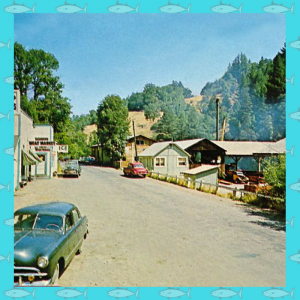 The story of Berry’s Mill and Lumberyard began in the early 1940s. Prior to that, twenty-year-old Loren Berry and his father Merrill were working as loggers in the small town of Cazadero, California. The family had been living there since 1886 when Merrill’s father-in-law, George Montgomery, bought the town of Ingrams and renamed it Cazadero. In 1941 Merrill and his son began the downtown sawmill on the former NWP railroad depot site across the street from the General Store and the Post Office.
The story of Berry’s Mill and Lumberyard began in the early 1940s. Prior to that, twenty-year-old Loren Berry and his father Merrill were working as loggers in the small town of Cazadero, California. The family had been living there since 1886 when Merrill’s father-in-law, George Montgomery, bought the town of Ingrams and renamed it Cazadero. In 1941 Merrill and his son began the downtown sawmill on the former NWP railroad depot site across the street from the General Store and the Post Office.
In those days, logging was done in and near Cazadero to convert forests to grazing land. A few years later during World War II, Berry’s Sawmill and Lumberyard supplied the big beams used at Guerneville’s Mount Jackson mine (abandoned in1970 due to high levels of mercury). There was a thriving business in quicksilver, which was required to detonate artillery shells on battleships.
Berry’s Sawmill:
When Berry’s sawmill outgrew the site, the machinery was dismantled and moved six miles down the road to its present location on 32 acres along Highway 116 where Jim and Bruce (Loren Berry’s sons) carried on the family enterprise. The business continued to prosper until one night in 1989. The town was awakened by news of a fire at the mill, which was not an uncommon occurrence. But this was no pissant affair. In the darkness, the sky raged orange for miles. Flames engulfed the entire mill. Twenty-four-inch steel support beams sagged under the intense heat. The sawmill that had operated since 1941 was gone. The community, however, came together to rebuild Berry’s Mill and Lumberyard. Six months later, the familiar buzz of the saws was heard once again. The business evidently has run its course and is presently on the market for nine million dollars.
The post Berry’s Mill and Lumberyard appeared first on John McCarty.
August 2, 2018
Camp Royaneh
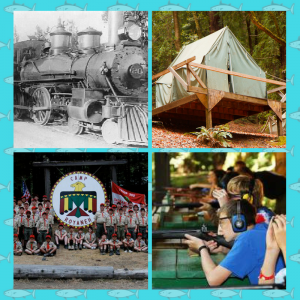 The San Francisco Bay Area Council (SFBAC) established Camp Royaneh as a permanent Boy Scout site along Austin Creek near Cazadero in 1925. The Council purchased the 120 acre Watson Ranch for $17,000. Mrs. Watson was a nurse during the Civil War while her husband was captain of Company F out of Kansas. All of the Watsons are buried at the pioneer cemetery in Guerneville. The name “Royaneh” is an old Iroquois word meaning “Camp of Joy” or “Meeting Place of the Tribes”. Northwestern Pacific steam engine No. 20, which weighed almost 94,000 lbs., carried the boys over the 77 mile journey from Sausalito until 1933 when the line between Duncans Mills and Cazadero was closed.
The San Francisco Bay Area Council (SFBAC) established Camp Royaneh as a permanent Boy Scout site along Austin Creek near Cazadero in 1925. The Council purchased the 120 acre Watson Ranch for $17,000. Mrs. Watson was a nurse during the Civil War while her husband was captain of Company F out of Kansas. All of the Watsons are buried at the pioneer cemetery in Guerneville. The name “Royaneh” is an old Iroquois word meaning “Camp of Joy” or “Meeting Place of the Tribes”. Northwestern Pacific steam engine No. 20, which weighed almost 94,000 lbs., carried the boys over the 77 mile journey from Sausalito until 1933 when the line between Duncans Mills and Cazadero was closed.
Camp Royaneh is the longest running Boy Scout camp west of the Mississippi River, having served over 100,000 Scouts during its ninety-three year history.
Camp Royaneh:
Camp Royaneh has a large dining hall, campsites that offer open cabin and tent camping with activities that include a dip in the Olympic-size swimming pool, hiking, canoeing, horseback riding, shooting range, and much more. Pour in the powder, pack the .45 caliber ball and test your skill with a muzzleloader like the ones used throughout the Old West. Don’t forget to test your hand at throwing the “hawks” in the traditional trapper style (don’t try that at home or in the subway or inside a government building). Planning campfires and practicing troop yells are encouraged before arriving. A troop yell will come in handy at the dining hall. Until next time, cheers!
The post Camp Royaneh appeared first on John McCarty.
July 28, 2018
Cazadero Music Camp
 In 1927 the City of Berkeley paid George Montgomery $25,000 for the fifty acres at Elim Grove and established the Cazadero Redwood Camp for East Bay boys and girls. In 1957 it became the Berkeley Music Camp and in 1996 it was known as the Cazadero Performing Arts Camp.
In 1927 the City of Berkeley paid George Montgomery $25,000 for the fifty acres at Elim Grove and established the Cazadero Redwood Camp for East Bay boys and girls. In 1957 it became the Berkeley Music Camp and in 1996 it was known as the Cazadero Performing Arts Camp.
The Cazadero Music Camp has been the summer home to tens of thousands of young musicians since the fifties. The first season had just 60 young musicians, but the word spread quickly. By 1961, over 300 campers attended, and by 1964, the camp had grown to four 12-day sessions with close to 600 youth in attendance. For the past 61 years, Cazadero has inspired generations of young musicians, growing into one of Northern California’s most vibrant youth programs.
Music:
The Cazadero Music Camp serves a diverse student body of over 1,200 young musicians every year, ages 10 – 18, from across the Bay Area and beyond. The 2018 lineup includes: musical instrument building, set design, and a rich variety of song, dance, and acting. In addition, a mix of woodshop, coding, cooking, gardening, sports, and crafts allows campers to write, edit, and publish their own eBooks and blogs. Instructors create a fun and supportive environment during a special edition of BandWorks Rock ‘n’ Roll Camp, where kids learn how to rock-out in style alongside professionals. The sessions run from June 18th through August 4th, with free admission to all weekend jazz, orchestra, and concert band performances. If you’re looking for something unique and entertaining (and cheap) along the Russian River, cruise over to Cazadero for the camp’s last concerts of the summer on Sunday, July 29th and on Saturday, August 4th. Both programs start at 1:30 p.m.
The post Cazadero Music Camp appeared first on John McCarty.
July 23, 2018
Black Bart
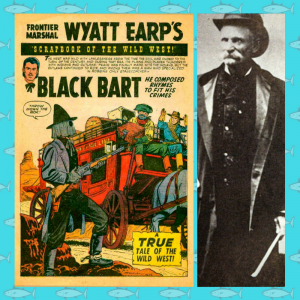 Black Bart (Charles Boles) robbed the Wells Fargo & Co. stage coaches on twenty-nine different occasions. Two of these holdups were near the Russian River. One was just west of the town of Duncans Mills and the second was north of Jenner at Meyers Grade on August 3, 1877. Black Bart made his demands in a civil, gentlemanly manner with a “Please throw down the box” and a double-barreled shotgun. He tucked away the $300 in cash and tossed the following poem into the strongbox: “I’ve labored long and hard for bread / For honor and for riches / But on my corns too long you’ve tread / You fine-haired sons of bitches.” It is said that he hid out that night at a barn (the refurbished version can be seen on present-day Hwy. 116 at Sheridan Ranch) before heading into Guerneville. A handkerchief he left behind with a laundry mark led to his ultimate downfall. Charles Boles served over four years in San Quentin Prison before being released in 1888.
Black Bart (Charles Boles) robbed the Wells Fargo & Co. stage coaches on twenty-nine different occasions. Two of these holdups were near the Russian River. One was just west of the town of Duncans Mills and the second was north of Jenner at Meyers Grade on August 3, 1877. Black Bart made his demands in a civil, gentlemanly manner with a “Please throw down the box” and a double-barreled shotgun. He tucked away the $300 in cash and tossed the following poem into the strongbox: “I’ve labored long and hard for bread / For honor and for riches / But on my corns too long you’ve tread / You fine-haired sons of bitches.” It is said that he hid out that night at a barn (the refurbished version can be seen on present-day Hwy. 116 at Sheridan Ranch) before heading into Guerneville. A handkerchief he left behind with a laundry mark led to his ultimate downfall. Charles Boles served over four years in San Quentin Prison before being released in 1888.
Black Bart:
Upon his release, Black Bart was asked if he would rob stages again. He said no. The reporter continued and queried whether or not the infamous poet had any more verses up his sleeve. His response was: “Young man, didn’t you hear me say that I wasn’t going to commit anymore crimes?”
Two brothers, George and John Gorton of Cazadero thought they would take advantage of the situation. George stopped the Wells Fargo stage along the Point Arena-Duncans Mills line. George copied Bart’s style with his gracious manners and poetic voice while John hid in the trees. The Gortons knew of Black Bart’s release date and tried to shift the blame to him. Their charade failed and they were caught in Kansas on February 15, 1889.
The post Black Bart appeared first on John McCarty.
July 15, 2018
Elim Gove in Cazadero
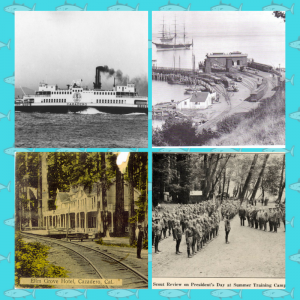 Elim Grove in Cazadero has been an integral part of the town since 1890, located where Raymond’s Bakery is today. Elim comes from a passage in the Bible: Exodus 15:27: “And Moses came to ELIM where there were twelve wells of water, and three-score and ten palm trees: and he camped there by the waters”. Biblical scholars interpret “Elim” as being “The Place of Refreshing”. While it is a coincidence that the grove is a mile from town, that is not where Elim received its title (i.e. Elim spelled backwards).
Elim Grove in Cazadero has been an integral part of the town since 1890, located where Raymond’s Bakery is today. Elim comes from a passage in the Bible: Exodus 15:27: “And Moses came to ELIM where there were twelve wells of water, and three-score and ten palm trees: and he camped there by the waters”. Biblical scholars interpret “Elim” as being “The Place of Refreshing”. While it is a coincidence that the grove is a mile from town, that is not where Elim received its title (i.e. Elim spelled backwards).
Elim was the site of the first summer retreat for the Bohemian Club in 1877. Members would board the ferry at the Embarcadero in San Francisco before catching a train at the Sausalito NWP depot. The seventy-seven mile trip from the bay to Elim lasted three hours with a stop at Duncans Mills to change over to the narrow gauge line.
Elim Grove:
George Montgomery, who bought Cazadero as well as christened the town with its present name, kicked out the Bohos in 1891 for frequent violations of the town’s temperance laws as well as abusing the “privileges” at the nearby Elim Grove Hotel. Montgomery soon replaced the Bohemian’s presence with a revivalist encampment cosponsored by the Salvation Army. In the 1920s, the San Francisco chapter of the Boy Scouts used Elim for a two-week summer session at the cost of $12/person. A 150′ gravel dam was constructed across Austin Creek to provide swimming and canoeing. Traditionally on the first day, the Scouts would make the fourteen-mile trek along the railroad tracks to Guerneville where they camped overnight near the Russian River. Over four hundred attended the Boy Scout camp each July until 1924. Next time I will share some juicy tidbits of the various music camps that have thrived at Elim since 1957. Until then, take care out there.
The post Elim Gove in Cazadero appeared first on John McCarty.

